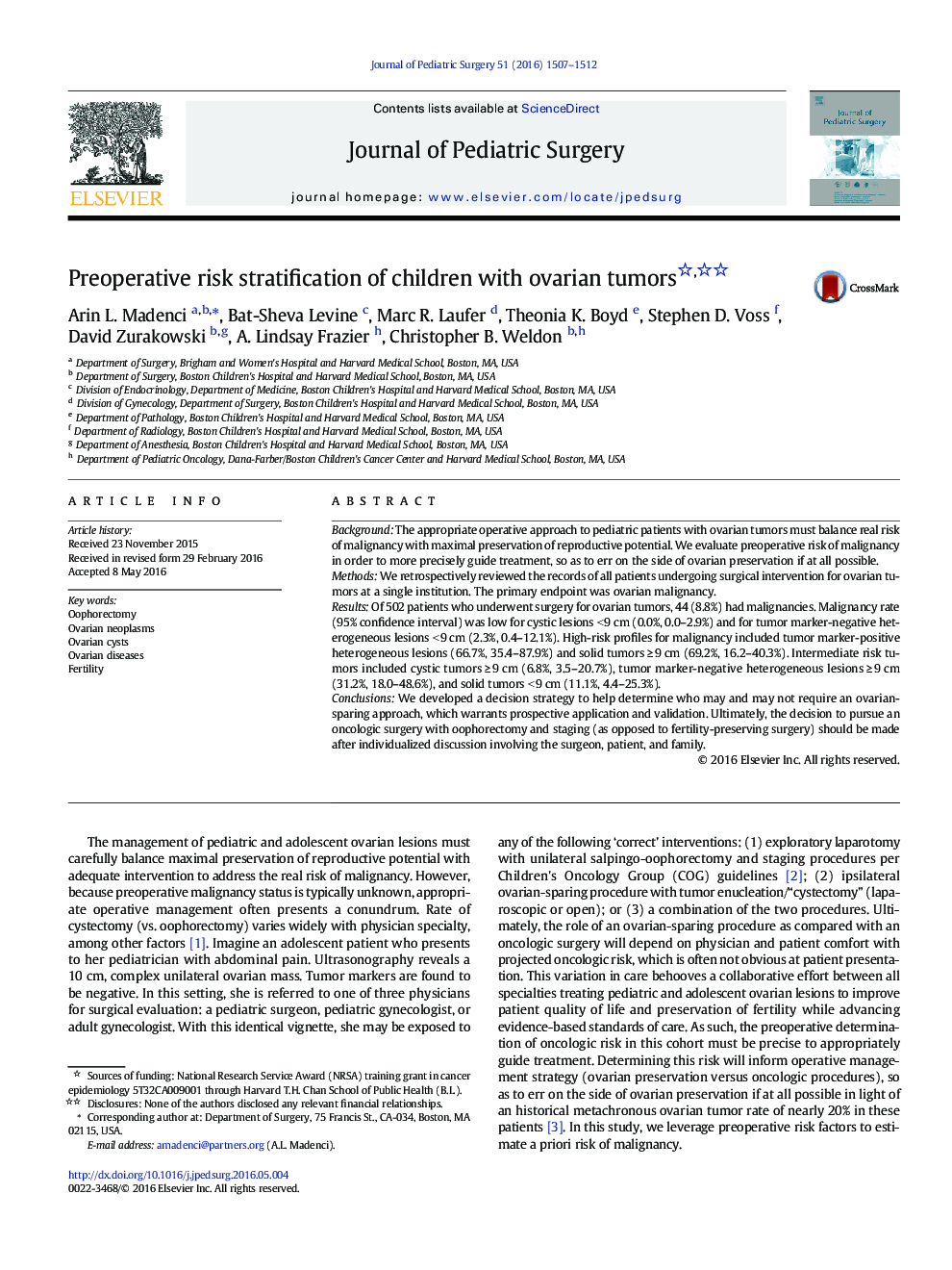| Article ID | Journal | Published Year | Pages | File Type |
|---|---|---|---|---|
| 4154719 | Journal of Pediatric Surgery | 2016 | 6 Pages |
BackgroundThe appropriate operative approach to pediatric patients with ovarian tumors must balance real risk of malignancy with maximal preservation of reproductive potential. We evaluate preoperative risk of malignancy in order to more precisely guide treatment, so as to err on the side of ovarian preservation if at all possible.MethodsWe retrospectively reviewed the records of all patients undergoing surgical intervention for ovarian tumors at a single institution. The primary endpoint was ovarian malignancy.ResultsOf 502 patients who underwent surgery for ovarian tumors, 44 (8.8%) had malignancies. Malignancy rate (95% confidence interval) was low for cystic lesions < 9 cm (0.0%, 0.0–2.9%) and for tumor marker-negative heterogeneous lesions < 9 cm (2.3%, 0.4–12.1%). High-risk profiles for malignancy included tumor marker-positive heterogeneous lesions (66.7%, 35.4–87.9%) and solid tumors ≥ 9 cm (69.2%, 16.2–40.3%). Intermediate risk tumors included cystic tumors ≥ 9 cm (6.8%, 3.5–20.7%), tumor marker-negative heterogeneous lesions ≥ 9 cm (31.2%, 18.0–48.6%), and solid tumors < 9 cm (11.1%, 4.4–25.3%).ConclusionsWe developed a decision strategy to help determine who may and may not require an ovarian-sparing approach, which warrants prospective application and validation. Ultimately, the decision to pursue an oncologic surgery with oophorectomy and staging (as opposed to fertility-preserving surgery) should be made after individualized discussion involving the surgeon, patient, and family.
